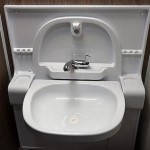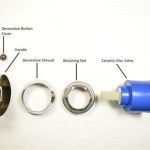Bathroom Sink Handles Loose: Essential Aspects for Repair and Maintenance
Bathroom sink handles are an indispensable part of any bathroom, providing convenient control over the flow of water. However, when these handles become loose, it can be a source of frustration and potential water damage. Understanding the essential aspects of loose bathroom sink handles is crucial for proper repair and maintenance, ensuring a well-functioning bathroom. ### 1. Identifying the Source of Looseness The first step in addressing loose bathroom sink handles is to determine the cause of the issue. Common culprits include: -Worn-out screws or bolts:
Over time, the screws or bolts that secure the handles to the faucet can become loose or corroded, resulting in a shaky or loose handle. -Faulty washer:
The washer, a seal that creates a watertight connection between the handle and the faucet, can deteriorate over time, causing the handle to become loose and allowing water to leak. -Loose O-rings:
O-rings are used to seal the connection between the handle and the faucet body. If these O-rings become worn or damaged, they can lead to handle looseness and water leaks. ### 2. Tools and Materials Required Once the cause of the looseness has been identified, the necessary tools and materials can be gathered for the repair. Typically, a screwdriver, a wrench or pliers, and replacement parts (if needed) are sufficient. ### 3. Repairing Loose Handles Depending on the cause of the looseness, the repair process may vary slightly, but the general steps are as follows: -Tightening screws or bolts:
Use a screwdriver or wrench to tighten any loose screws or bolts that are securing the handle to the faucet. -Replacing washer:
If the washer is faulty, it can be replaced by removing the handle and installing a new washer. -Replacing O-rings:
Worn or damaged O-rings can be replaced by removing the handle, replacing the O-rings, and reinstalling the handle. ### 4. Preventive Maintenance To prevent loose bathroom sink handles in the future, regular maintenance is recommended. This includes: -Periodically checking the tightness of screws or bolts:
Use a screwdriver or wrench to ensure that all screws or bolts are secure and not loose. -Inspecting washers and O-rings:
Check the condition of washers and O-rings for signs of wear or damage. Replace them as needed. -Cleaning the handle assembly:
Regularly clean the handle assembly to remove dirt and debris that can contribute to handle looseness. ### Conclusion Loose bathroom sink handles can be a minor annoyance or a potential source of water damage. By understanding the essential aspects, including the cause of looseness, necessary tools and materials, repair process, and preventive maintenance, homeowners can effectively address this issue, ensuring a well-functioning bathroom.
How To Tighten Faucet Handle Homeserve Usa

How To Fix Loose Sink Faucet

Tighten A Loose Lever On Moen Brantford Faucet

How To Tighten A Bathroom Faucet Handle

Sbw 8 A Loose Bathroom Faucet Handle

Bathroom Faucet Handles Loose Wobbly Diy Fix

How To Tighten A Loose Bathroom Faucet

Loose Faucet Lever And No Set Plumbing Inspections Internachi Forum

How To Repair A Single Handle Kitchen Faucet Diy Family Handyman

Loose Faucet Lever And No Set Plumbing Inspections Internachi Forum
Related Posts







